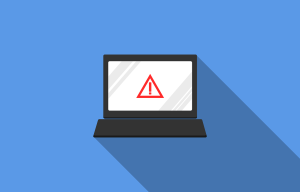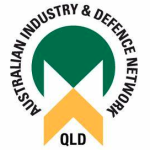The marketing team is doing a great job, right? Their criteria for determining success are all in the colour green. Meanwhile, your sales team is putting in more time prospecting than closing, which means they aren’t getting paid for their efforts.
What’s going on right now?
In many companies, there is a disconnect between marketing and sales:
The sales team believes that the leads they are receiving are unqualified.
Marketing claims that the sales team is unable to complete the sale.
Warm leads and cold leads are not distinguished, nor are high-value leads and low-value leads.
There is no clue as to where the disconnect is.
Is this a familiar scenario?
Marketing and sales must be re-aligned, and the first step is to integrate sales development into your current workflows and procedures.
- A Sales Strategy Template
- What Is the Definition of Sales Development?
- Acclimating customers to the purchasing process is part of sales development.
- A complete sales process consists of the following steps:
- Prospecting
- establishing contacts and obtaining credentials
- Researching
- Introducing and Addressing Counterarguments
- Closing
- Almost directly in the middle of the marketing-to-sales handoff process, sales development takes place between phases 1 and 2.
Why Is a Sales Development Process Necessary?
Inbound marketing relies heavily on sales development because your marketing team is likely to be generating leads throughout the buyer’s journey. When a potential customer becomes a lead, he or she may not be ready for sales outreach. To avoid wasting the sales representative’s time, it is imperative that the lead be properly prepared before the call is made (or, worse, alienating them).
It is easier to close a sale when sales development is properly utilised, as prospects are better prepared to make a decision before being handed over to sales closers.
“In a nutshell, sales is selling directly to the end user. The role of business development is to work with partners to sell to the end customer in a scalable manner, which is the job of business development.” As an early-stage company advisor, Andrew Dumont tells me. Naturally, the more transactions your sales force completes and the more time they have to devote to selling activities, the more effective your sales development process is.
Creating a System for Sales Promotion
The sales development process is divided into three stages:
Identification of Marketing and Sales Eligible Prospects (SQLs)
Maximising the potential of those prospects
Converting these leads into genuine sales opportunities requires a thorough screening process.
Unfortunately, this is not always the case, especially if the efforts of marketing and sales aren’t coordinated..
Some of the first steps in implementing your process are as follows
After a prospect becomes a lead, identify the characteristics of the subsequent lifecycle stages.
Visitors who download an ebook from a website are not necessarily prospects. This results in chaos because everyone is grouped together under the umbrella term “lead.”
Those who aren’t ready to buy are nurtured by the marketing team and those who are on the verge of making a purchase are identified.
MQLs are leads that the marketing department has identified as being ready to be sold to. The following lifecycle step is critical because they could be correct or incorrect.
In contrast, a sales qualified lead (SQL) is a MQL that has been deemed a qualified prospect by the sales team. As a result, their goal is to qualify and engage the SQL until they become viable leads.
Your marketing team must first understand what the sales team is looking for before it can create MQLs for them. Your marketers aren’t responsible for lead qualification, but rather a framework for increasing MQLs that convert into SQLs and reducing the burden on your sales team by weeding out bad fit leads.
Free lead management training from Relevate may be able to assist you in learning more about this subject.
Identify the leaks in the pipeline
As soon as each stage of the lifecycle—including MQL, SQL, and Opportunity—has been clearly defined, you can start looking for areas where the process is falling short. Inquire about the efforts of key personnel in each department, such as:
What are the best leads?
What characteristics in a potential customer instantly disqualify them?
For an interaction to be productive, what must happen before a sales representative contacts you?
While prospecting and engaging, where do you find yourself spending the most of your time?
Unqualified leads can be more effectively nurtured and qualified by marketing.
MQLs and SQLs, or SQLs and Opportunities, may be better understood with the help of these questions.
Make a Plan for Bridging Any Gaps You Find
There may have been a crucial step that was left out of the plan. It’s not clear who will be responsible for it if that’s the case.
In order to improve sales enablement, what marketing initiatives should be expanded?
What materials are necessary for salespeople to engage in more meaningful dialogues with customers?
When it comes to coordinating marketing and sales efforts, how can technology help What factors go into determining the quality of a sales lead? Automated lead nurturing?
For Marketing and Sales, Create a Service-level Agreement (SLA)
Two parties enter into an agreement that specifies the frequency and quality of deliveries, known as a SLA. A SLA can be used to codify the hand-off between departments by defining what must happen before, during, and after the transfer of responsibilities, as well as what success looks like.
Both departments must agree on definitions and roles in order to be able to take responsibility for their work and understand how it all fits into the organization’s long-term goals.
Start the process.
Marketers and salespeople can work together more effectively now that their roles are more clearly defined and a shiny new service level agreement has been established, while salespeople can focus on qualifying and closing more leads.
As the team changes and you gain a better understanding of what works best, don’t be afraid to make changes to the process.
As you increase your investment in these initiatives, you’ll want to keep these things in mind when developing your sales strategy.
A Sales Development Process Must Include These Five Elements:
Strategic components that have been carefully developed to move prospects through the purchasing cycle are key to effective sales development methods. Your sales development process can be broken down into the following components.
Customer Relationship Management (CRM) Software That Fits Your Workflows
Rather than burdening your sales development staff with additional administrative tasks, customer relationship management (CRM) solutions are just as valuable for their ability to complement their work methods rather than adding unnecessary administrative burdens.
With the right CRM and sales software, sales development agents can more effectively collect lead information and carry out prospecting “A team’s approach to reaching customers with their goods or services is formalised as part of the sales development process. Making sure the strategy used to acquire new customers is cost effective and productive in terms of attracting long-term customers is what matters the most “The Sales Hunter’s Mark Hunter says
Lead Qualification Methods That Remain Stable
A qualified lead is one that has met certain criteria. Which stage of the buyer’s journey is most appropriate for your sales team to be involved in? Effective sales development relies on clearly defined criteria and methods for qualifying potential customers. You are wasting your time by sending in unqualified leads to sales development, and you may be losing out on targeted prospects if you send them to sales closers who aren’t well-versed in your product or service.
The progression of a lead through the purchasing process can be illustrated using these criteria, as well as the lead qualification and nurturing procedures. Each of these teams, marketing, sales development, and sales closing, must have an in-depth understanding of these concepts in order to be effective.
“Make sure your representatives follow a specific set of rules if you have a specialised mindset. Team best practises help new employees get up and running quickly and efficiently. From your recruitment strategy to the frequency of contact with prospects, your playbook will be a comprehensive guide “In a Forbes article, Greg Klingshirn recommends.
A Portal for the Management of Centralized Content
Sales development personnel use a variety of collateral and content materials to educate and qualify prospects. In many cases, these materials are housed in separate silos, requiring sales professionals to spend precious time searching for the right content assets for a specific prospect or teaching leads about a specific selling point.
Many times, salespeople are forced to use products that are less effective but still meet their needs because finding assets is so difficult. Sales development teams can more effectively influence purchasing decisions when they have access to a centralised repository of approved sales materials that are appropriately labelled and classified for various buyer personas and phases.
Intelligence in the Workplace
For example, data provided by analytics helps sales development reps identify the most effective sales materials that align with buyer personas and various stages of the buying journey. Moreover, data from analytics helps sales development reps identify the most effective sales materials.
“When marketing has access to the necessary data, it can improve programmes. Salespeople have a reputation for poor data management, and sales leadership is concerned about sales forecast data” (with good reason). On the other hand, data collection is a strength of well-run sales development teams. To make life easier for marketing, sales development teams spend most of their time in the CRM application and are rewarded for providing accurate data “TOPO Blog” author Craig Rosenberg contributes his thoughts on the topic. With the right resources, you can speed up the lead qualification process and allow sales reps to focus on what they do best—selling.
A System for Collaboration and Reaction
Since marketing and sales are intertwined, it is imperative that both departments contribute to the process of sales development. Having a mechanism for feedback built into the most effective sales development processes is essential. Using this method, marketing teams can teach sales development representatives about the intricacies and unique challenges of sales leads, while also enabling sales teams to provide feedback on prospects’ readiness and the ease with which prospects passed along by your sales development team convert.
Sales development processes are used by all sales organisations, regardless of how they prefer to refer to them. The more quality leads and sales your teams generate, the more precisely you design your processes and the more thoroughly you train your marketing and sales personnel in each step. In order to boost productivity and profitability, it’s worth your time to develop a comprehensive, data-driven sales growth strategy. What You Need to Know About Search Engine Optimization for Foreign Markets. If your website has a global audience, you’ve probably spent some time considering the best ways to organise and optimise your site for different countries.
Concluding
You must take into account many factors before making your content available to an international audience. There are a few best practises to follow when using a domain structure, especially if your content is being published in another language.
Here, we’ll cover a variety of domain structure options, how Google views these structures, and some unique SEO research and advice for maximising international SEO performance.







